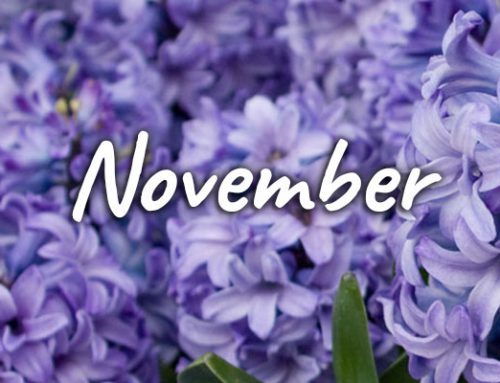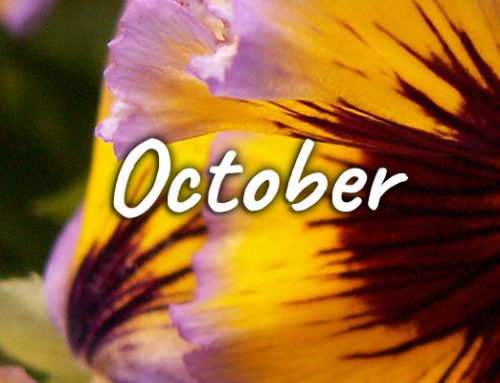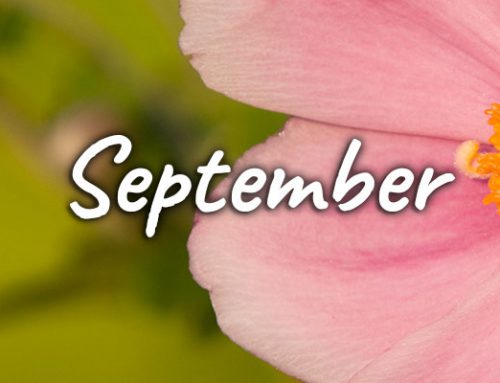
Come May and you’ll be itching to get out into the garden to plant your borders baskets and tubs but beware of the strong possibility of late frosts that would kill off any freshly planted summer bedding.
Planting and Pruning
The end of May is plenty early enough for planting out summer bedding or hanging out your baskets, but you can remove faded wallflowers and spring bedding that has gone over in preparation.
Some bedding withstands cold evenings better than others, for example antirrhinums are far more robust than marigolds as are petunias than lobelia so ask for our advice.
If it is instant colour you are looking for why not try rockery plants or herbaceous perennials many of which will be showing lovely colour.
Tie in the new stems of hybrid clematis, also climbing roses and sweet peas.
Cut back dead wood on Japanese maples to a healthy shoot and prune forsythia, quince and flowering currant bushes once flowering has finished.
Prune tender shrubs such as penstemon, fuchsia and hebe to a healthy shoot and cut back aubretia, arabis and alyssum once they have finished flowering.
Plant out dahlia, canna and gladioli and sow wallflower, pansy and bellis seeds for your winter displays.
Pest Control
Start spraying rose bushes with a combined fungicide and insecticide to prevent any black spot or rust appearing and to combat greenfly.
Keep on top of the slug and snail situation! There are slug pellets which if used as directed are safe around hedgehogs, birds, pets and children please ask for advice on this issue. Watch out for lily beetles, vine weevil larvae and aphids and treat at the first sign of infestation.
Lawns
Try to mow your lawn weekly and feed established lawns if not already done so with a high nitrogen lawn food.
Dandelions are everyone’s nightmare! Remove flower heads before they go to seed, preventing them from multiplying quickly.
Mow around bulb foliage until early June, then you may mow over them.
Over seeding of bare patches can still be done during the early part of the month.
General Jobs
Support herbaceous plants such as delphiniums, lupins and peonies with a good plant support.
Tie in sweet peas using a soft twine or sweet pea rings, removing side shoots will result in longer stemmed flowers.
Dead head tulips and apply a liquid fertiliser but let the foliage die down naturally otherwise they won’t flower next year.
Feed acid loving plants such as rhododendron, azalea and camellia after flowering to avoid yellowing of the leaves.
Fruit and Vegetables
Continue to sow and thin out rows of vegetables such as salad leaf, radish, spring onions, carrots and spinach on a regular basis to ensure a constant supply and to avoid them running to seed.
Earth up main crop seed potatoes around four times after planting before letting them grow through.
Hoe between rows in the vegetable garden weekly to loosen any germinated weeds to stop them taking hold.
Protect fruit trees and gooseberry bushes from birds with a suitable net. Birds can wipe out crops very quickly if left unprotected.
Wild Birds and Ponds
Remove blanket weed from ponds by twirling it around a stick, cut back established pond plants and top dress the pots with a washed grit.
Make sure all filters are clean and your pump is working correctly.
For your garden birds switch to a seed mix, sunflower hearts or nyger seed rather than peanuts or suet treats now that fledglings are around, make sure a fresh supply of water is available in birdbaths for drinking and washing.
Plant of the Month
Hosta- A wide range of varieties are readily available which differ in growth from compact 1ft to larger leaf types nearer to 3ft. Hostas are grown for their attractive leaves which vary from blue to lime green or yellow to cream variegated and have showy flower spikes of either mauve or white. They are good for either borders or large pots, just make sure you give them room to grow and protect from slugs and snails.
Tip of the Month
You can get a head start on planting your summer baskets and containers if you can allocate them a space in your greenhouse for the month! Use a decent compost and add water retentive gel and a season long granular feed, if the compost doesn’t already include these. Once the basket is planted pinch back all the plants to encourage strong bushy growth, this will reward you with more flower growth later on. Once established liquid feed them once a week to give them that extra help and water them daily so as not to let them dry out.
Happy Gardening
Craig




